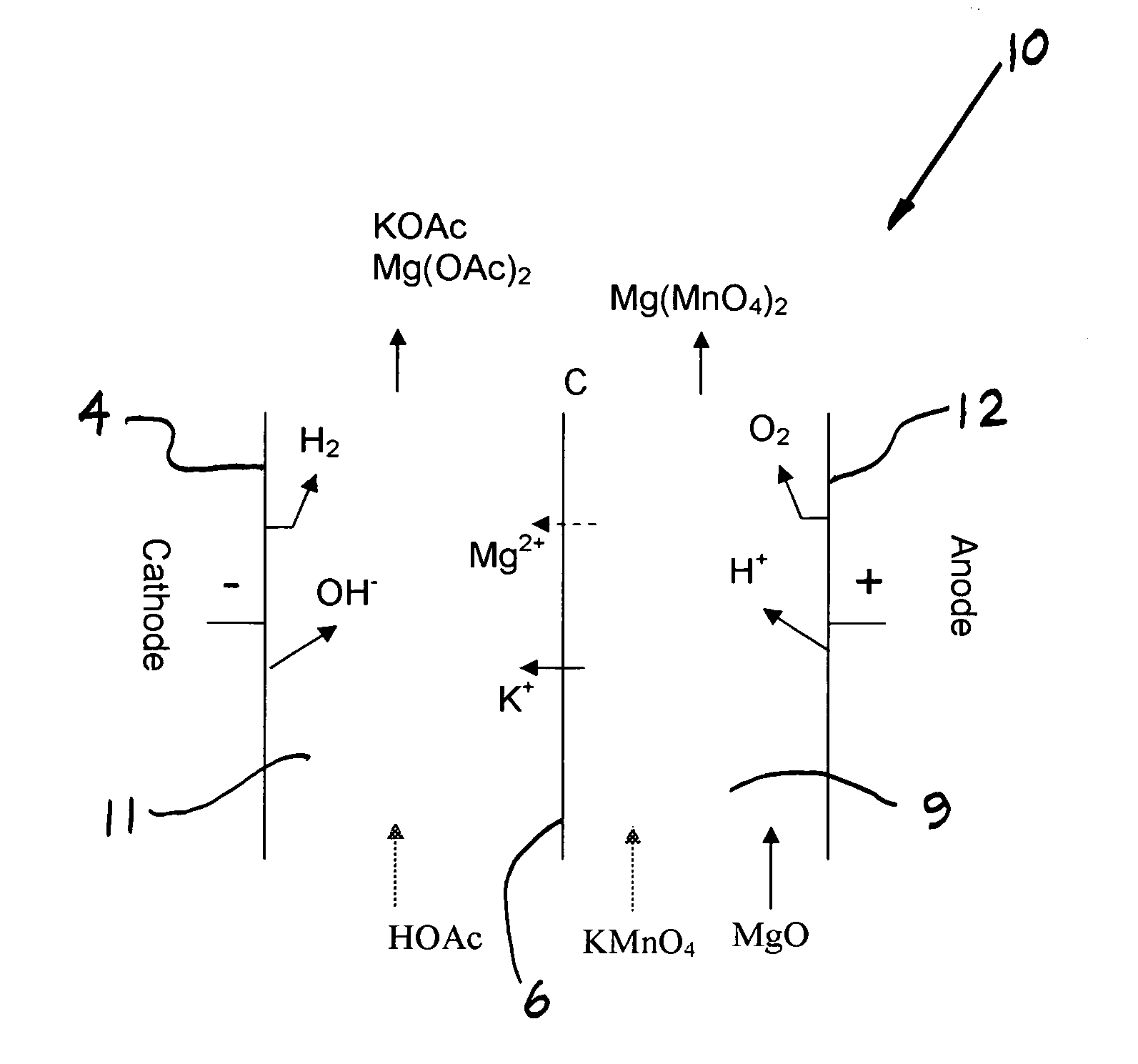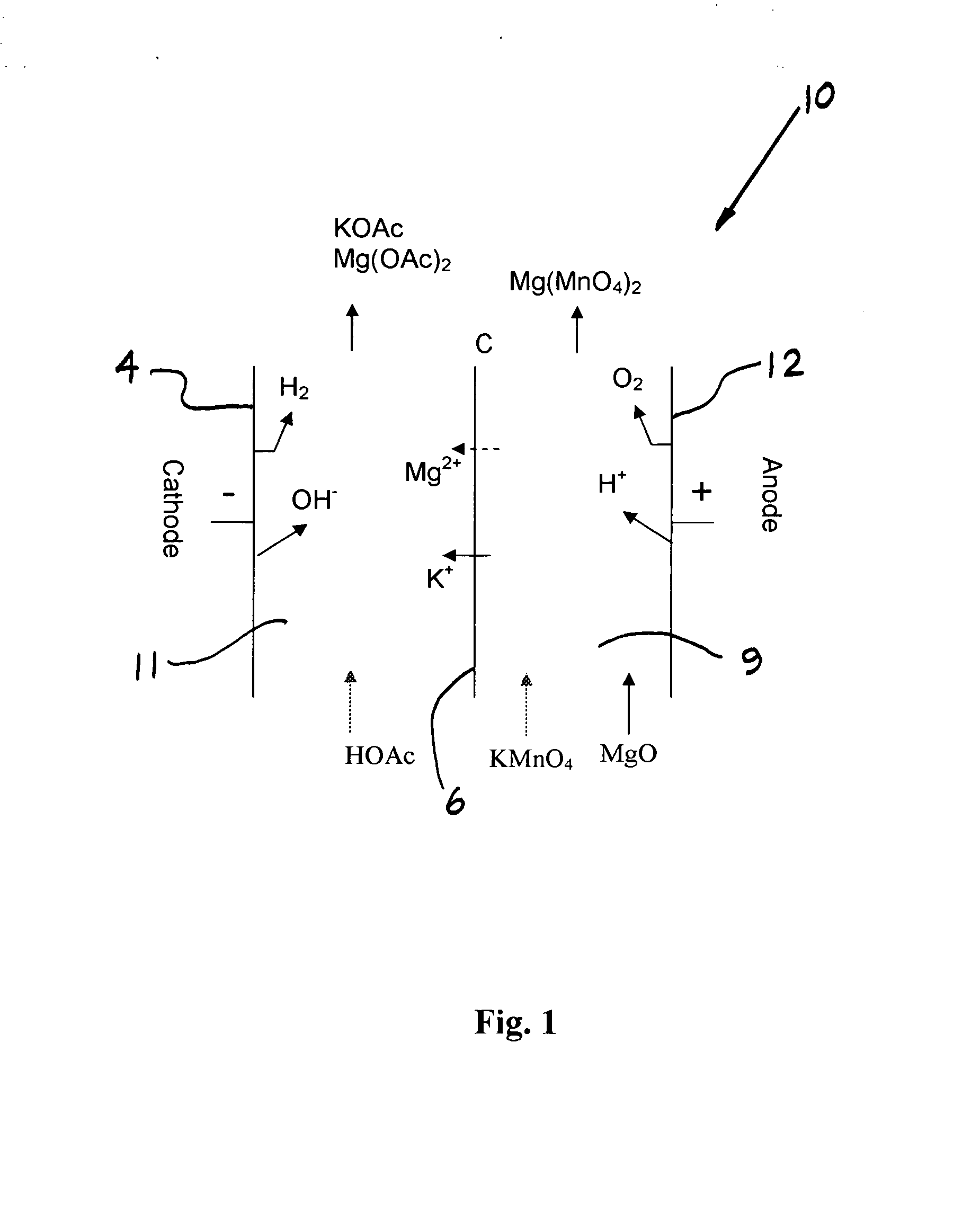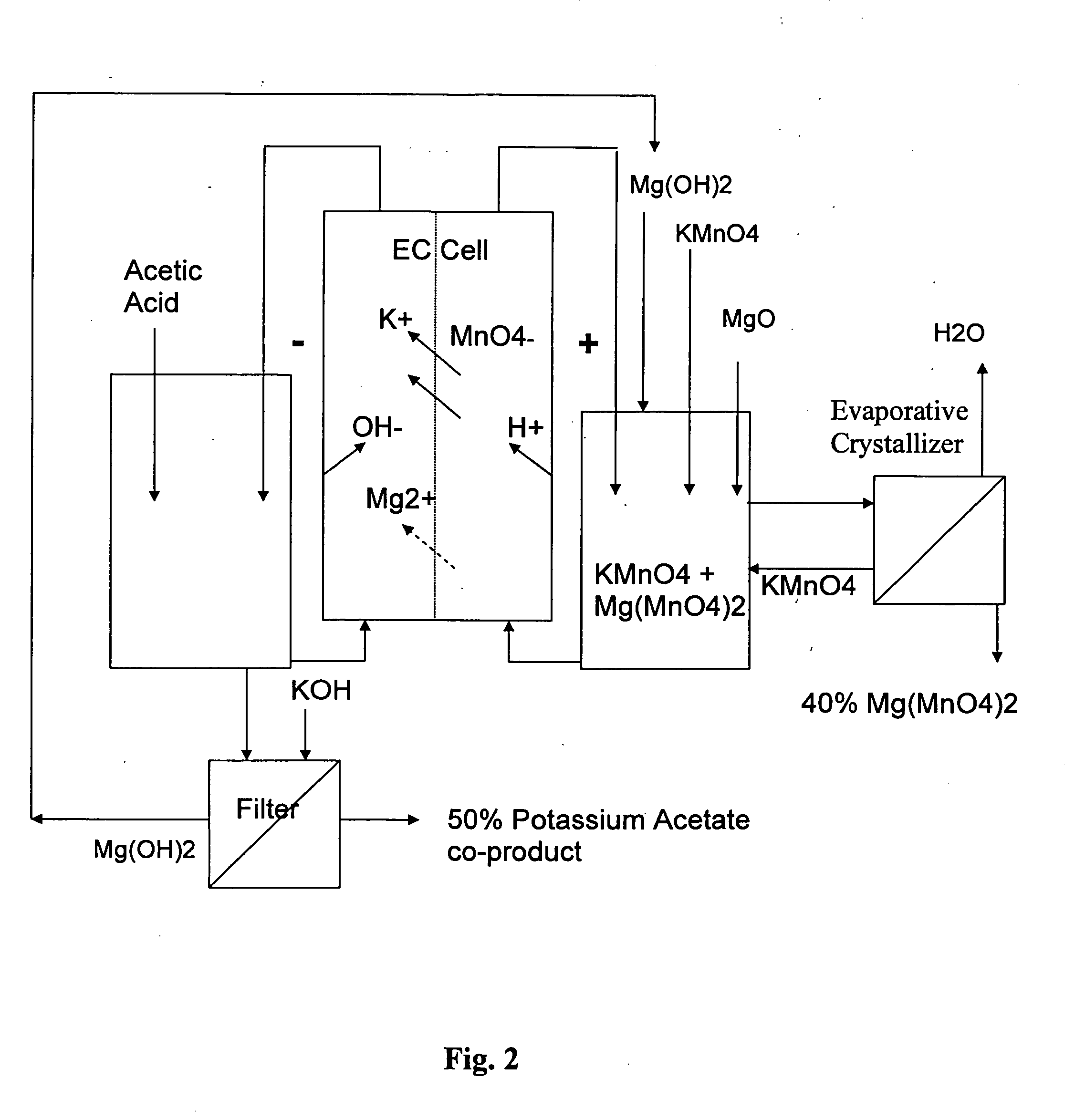Electrochemical methods for making highly soluble oxidizing agents
a technology of oxidizing agent and electrochemical separation method, which is applied in the direction of chlorates, liquid/fluent solid measurements, peptides, etc., can solve the problems of large quantities of insoluble salts, inability to readily obtain non-potassium permanganate salts from native ores, and limited solubility of potassium permanganate , to achieve the effect of increasing the number of insoluble salts
- Summary
- Abstract
- Description
- Claims
- Application Information
AI Technical Summary
Benefits of technology
Problems solved by technology
Method used
Image
Examples
example 1
[0065] Production of Magnesium Permanganate and Potassium Acetate in a Two Compartment Electrochemical Cell—Batch Operation
[0066] A series of batch electrolyses were performed to define the selectivity of the Nafion 324 membrane for potassium transport over magnesium transport. These two compartment experiments were performed using a MP flow cell (ElectroCell AB, Sweden) fitted with a DSA-oxygen anode, NAFION 324 membrane, and nickel cathode. The electrolysis cell corresponds to that of FIG. 1. The solution temperature was 75° C., and the current density 100-200 mA / cm2. Water was electrolyzed at both anode and cathode to form H+ and O2 at the anode and OH− and H2 at the cathode. Acetic acid was added to the catholyte to form potassium acetate. Electrolyses were performed at various ratios of potassium permanganate to magnesium permanganate in the feed, and the ratio of potassium acetate formed to magnesium acetate formed was determined. In each experiment, about 20% of potassium pe...
example 2
[0067] Production of Magnesium Permanganate and Potassium Acetate in a Two Compartment Electrochemical Cell—Continuous Operation
[0068] A continuous experiment was performed for over 400 hours wherein magnesium permanganate was drawn off periodically and replaced with solid potassium permanganate to maintain an average feed composition of 5.9% potassium permanganate and 6.7% magnesium permanganate. MgO was added to the anolyte to form magnesium permanganate. The experiment was performed using a MP flow cell (ElectroCell AB, Sweden) fitted with a DSA-oxygen anode, NAFION 324 membrane, and nickel cathode. The electrolysis cell configuration corresponded to that of FIG. 1. The solution temperature was 40° C., and the current density was 50 mA / cm2. Acetic acid was added to the catholyte to form potassium acetate, at a co-product concentration of 25-35%. The magnesium acetate concentration built up to a value of about 8%. The current efficiencies for magnesium permanganate and potassium ...
example 3
[0070] Production of Calcium Permanganate and Potassium Acetate in a Two Compartment Electrochemical Cell—Batch Operation
[0071] Electrolysis was performed to define the selectivity of the NAFION 324 membrane for potassium transport vs. calcium transport. The experiment was performed using a MP flow cell (ElectroCell AB, Sweden) fitted with a DSA-oxygen anode, Nafion 324 membrane, and nickel cathode. The electrolysis cell configuration corresponded to that of FIG. 1. The solution temperature was 75° C., and the current density 100 mA / cm2. Water was electrolyzed at both anode and cathode to form H+ and O2 at the anode and OH− and H2 at the cathode. Acetic acid was added to the catholyte to form potassium acetate. Calcium oxide was added to the anolyte to form calcium permanganate. For an average feed composition of 15.4% potassium permanganate and 5.9% calcium permanganate, a ratio of 6.0 moles of potassium per mole of calcium was transported. The ratio of moles (K / Ca) transported vs...
PUM
| Property | Measurement | Unit |
|---|---|---|
| temperatures | aaaaa | aaaaa |
| current density | aaaaa | aaaaa |
| current density | aaaaa | aaaaa |
Abstract
Description
Claims
Application Information
 Login to View More
Login to View More - R&D
- Intellectual Property
- Life Sciences
- Materials
- Tech Scout
- Unparalleled Data Quality
- Higher Quality Content
- 60% Fewer Hallucinations
Browse by: Latest US Patents, China's latest patents, Technical Efficacy Thesaurus, Application Domain, Technology Topic, Popular Technical Reports.
© 2025 PatSnap. All rights reserved.Legal|Privacy policy|Modern Slavery Act Transparency Statement|Sitemap|About US| Contact US: help@patsnap.com



